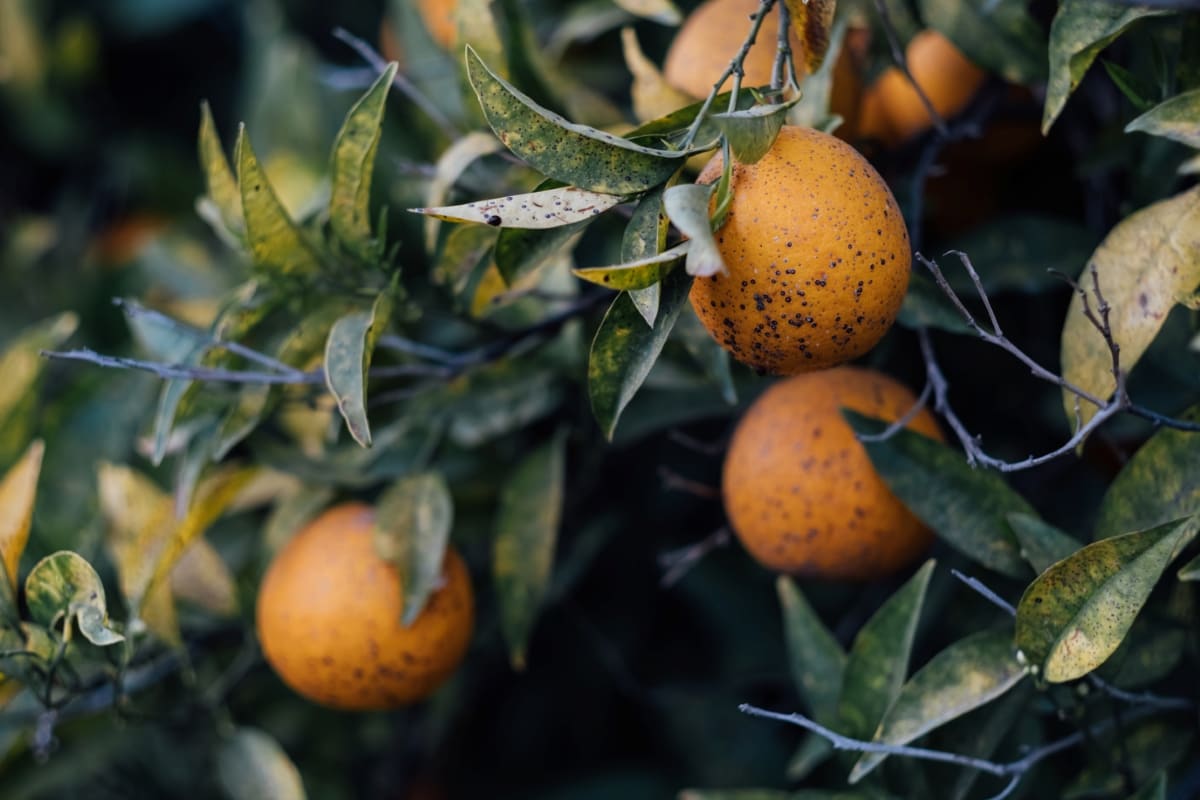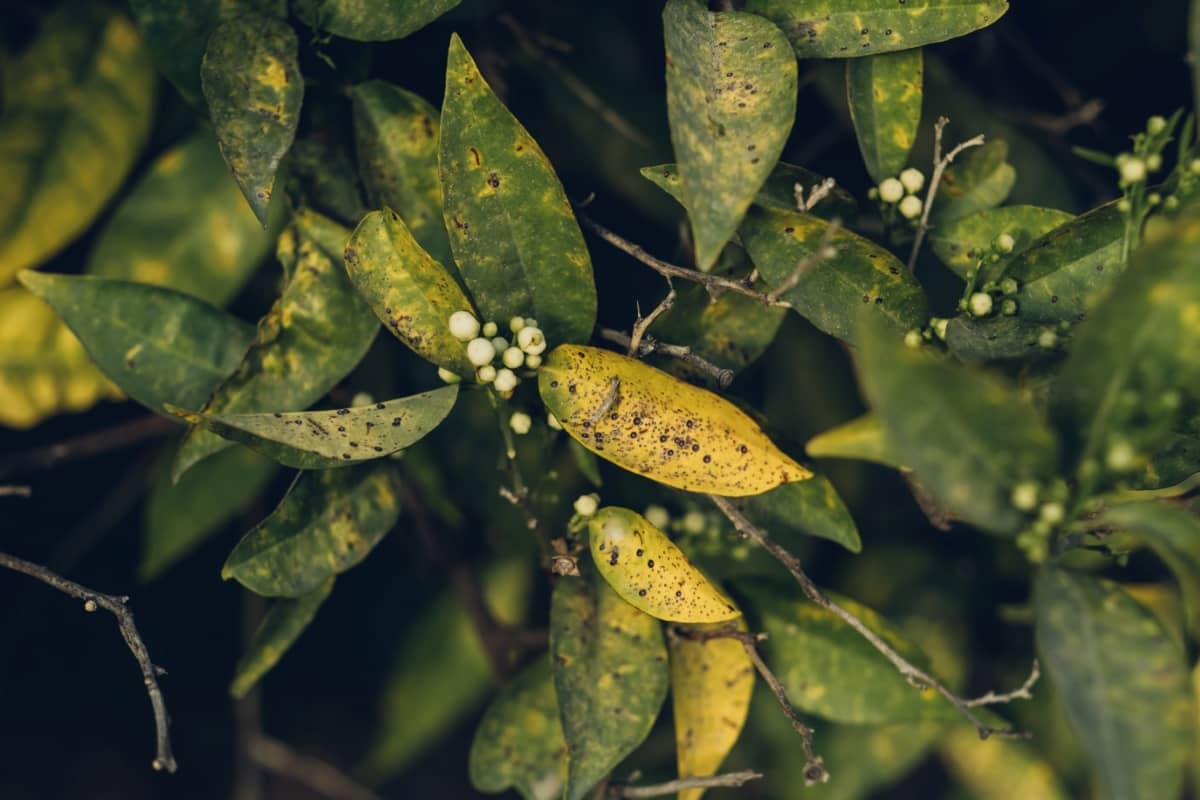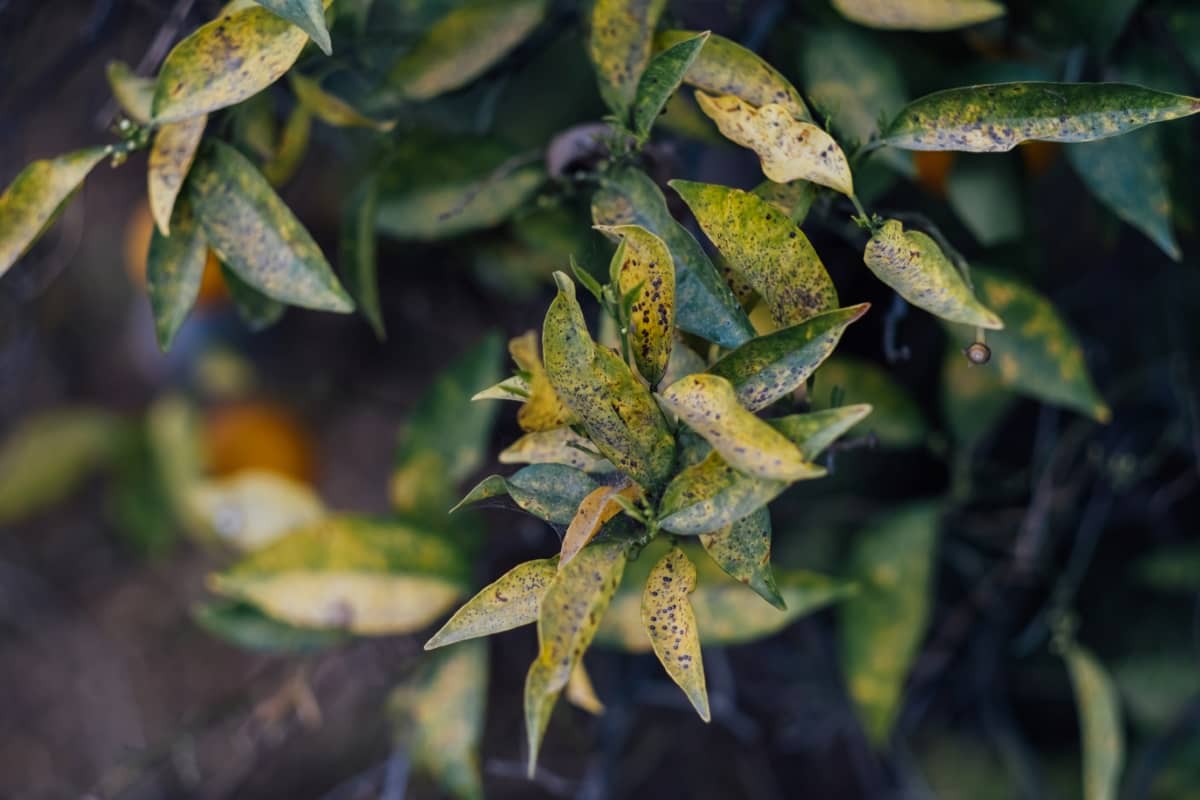Bacterial citrus diseases pose a significant threat to the citrus industry worldwide. These diseases are caused by various bacteria that infect citrus trees, leading to reduced yields and compromised fruit quality. Understanding the basics of bacterial citrus diseases is crucial for effective disease management.

In this section, we will provide a concise overview of these diseases, their impact on citrus trees, and the importance of early detection and control measures. By familiarizing ourselves with the fundamentals, we can better equip ourselves to tackle bacterial citrus diseases and safeguard the health and productivity of citrus orchards.
Common Bacterial Citrus Diseases: Symptoms and Identification
Citrus Canker
- Symptoms: Circular, corky lesions on leaves, stems, and fruit. Lesions are raised, surrounded by a water-soaked margin.
- Identification: Observe the distinctive raised lesions, which may have an ooze of bacterial exudate.
Citrus Blast
- Symptoms: Small, water-soaked lesions on leaves, stems, and fruit. Lesions turn black and necrotic.
- Identification: Examine for small, black necrotic lesions on plant parts.
Citrus Canker X
- Symptoms: Raised, corky lesions on leaves, stems, and fruit. Lesions may have a yellow halo and can cause fruit drop.
- Identification: Inspect for corky lesions with a yellow halo.
Citrus Bacterial Spot
- Symptoms: Small, water-soaked lesions that turn brown and necrotic. Usually, lesions are surrounded by a yellow halo.
- Identification: Look for small, brown necrotic lesions with a yellow halo.
Citrus Stubborn Disease
- Symptoms: Stunted growth, yellowing of leaves, and small, poorly shaped fruit. Affected fruit may show aborted seeds.
- Identification: Observe the characteristic symptoms of stunted growth, yellowing leaves, and misshapen fruit.
Pathogens Causing Bacterial Citrus Diseases: A Comprehensive Overview
Several pathogens are responsible for these diseases, including Xanthomonas citri subsp. citri (Xcc), responsible for citrus canker, and Xanthomonas citri subsp. Citrumelo (Xccm), causing citrus bacterial spot. Another major pathogen is Liberibacter asiaticus, which causes citrus Huanglongbing (HLB).
These pathogens enter the plant through wounds or natural openings, such as stomata, and multiply within the plant tissues, disrupting normal physiological processes. Understanding the characteristics, transmission, and management strategies for these pathogens is crucial for effective disease control and the sustainability of citrus production.
Diagnostic Techniques for Bacterial Citrus Diseases: Tools and Methods
Various diagnostic techniques have been developed to identify and differentiate the causative pathogens. Traditional methods include culturing the bacteria on selective media and microscopic examination. However, these methods are time-consuming and require specialized skills.
Molecular techniques, for instance, polymerase chain reaction (PCR), have revolutionized citrus disease diagnosis by allowing rapid and specific identification of pathogens. Serological methods, like enzyme-linked immunosorbent assay (ELISA), are also employed for detection. Additionally, advanced imaging techniques, such as hyperspectral imaging and thermal imaging, show promise for non-destructive disease diagnosis.
Cultural Practices for Preventing Bacterial Citrus Diseases
- Regularly clean pruning tools, equipment, and orchard areas to minimize disease spread.
- Choose citrus cultivars that show resistance to bacterial diseases.
- Avoid over-irrigation, as excessive moisture can create favorable conditions for bacterial growth.
- Remove and destroy infected branches to prevent bacterial spread.
- Eliminate weeds that can serve as hosts for bacteria.
- Avoid planting citrus trees in the same area for consecutive seasons to reduce disease buildup.
- Isolate and treat infected trees to prevent disease transmission.
- Maintain balanced nutrient levels to enhance tree vigor and disease resistance.
- Remove fallen leaves and fruit to minimize bacterial survival.
Chemical Control of Bacterial Citrus Diseases: Pros and Cons
Pros
- Effectiveness: Chemical control methods can quickly and effectively kill bacteria, reducing disease spread.
- Convenience: Chemical treatments are easy to apply and can cover large areas efficiently.
- Targeted Approach: Specific chemicals can be selected to target particular bacterial strains, increasing treatment efficacy.
- Long-lasting Protection: Some chemical treatments provide extended protection against bacterial diseases.
Cons
- Environmental Impact: Chemical control methods can adversely affect the environment, including water pollution and harm to beneficial organisms.
- Resistance Development: Frequent use of chemicals can lead to the development of resistant bacterial strains, making treatment less effective over time.
- Health Concerns: Chemicals used in control measures may pose health risks to humans and wildlife.
- Cost: Chemical treatments can be expensive, particularly for large-scale citrus operations.
In case you missed it: How to Pant, Grow, and Care for Bonsai Citrus

Biological Control Strategies for Managing Bacterial Citrus Diseases
Biological control strategies play a crucial role in managing bacterial citrus diseases. Integrated Pest Management (IPM) approaches focus on sustainable and environmentally friendly methods to control these diseases. One effective strategy is using beneficial microbes, such as Bacillus subtilis, Pseudomonas fluorescens, and Streptomyces spp., which inhibit the growth and spread of bacterial pathogens.
Integrated Pest Management (Ipm) Approaches for Bacterial Citrus Diseases
One of the key IPM approaches is the use of disease-resistant citrus varieties. These cultivars have been developed through breeding programs to possess genetic resistance against specific bacterial pathogens. By planting resistant varieties, growers can significantly reduce the risk of disease outbreaks. Another important IPM strategy is cultural practices.
Proper sanitation, such as removing and destroying infected plant material, can prevent the spread of bacteria. Additionally, pruning practices that promote airflow and sunlight penetration can create unfavorable conditions for bacterial growth. Biological control agents are also used in IPM. Beneficial organisms like predatory mites and parasitic wasps can help control bacterial populations by feeding on them or their vectors.
This approach reduces the need for chemical interventions while maintaining a balanced ecosystem. Lastly, monitoring and early detection are essential components of IPM. Regular scouting for disease symptoms allows growers to take timely action, preventing further spread of the bacteria. Diagnostic testing can confirm the presence of bacterial pathogens, enabling targeted management strategies.
Quarantine Measures and Regulations for Controlling Bacterial Citrus Diseases
Quarantine measures and regulations play a crucial role in controlling bacterial citrus diseases. These diseases significantly threaten the citrus industry, affecting both commercial and backyard citrus trees. Strict quarantine protocols must be implemented to prevent the spread of these diseases.
These measures include the inspection and certification of citrus plants, fruits, and nursery stock, as well as the establishment of restricted areas and the enforcement of movement restrictions. Additionally, education and awareness programs are essential to ensure that growers and the public understand the importance of complying with quarantine regulations.
Future Perspectives on Research and Management of Bacterial Citrus Diseases
Firstly, understanding the genetic diversity of bacterial pathogens is essential for developing effective control measures. Additionally, advancements in genomic sequencing and molecular tools enable rapid identification and characterization of bacterial strains, facilitating targeted management strategies.
In case you missed it: Homemade Citrus Peel Spray for Pests and Disease Control: Recipe for Natural and Organic Benefits of Plants

Furthermore, developing resistant citrus varieties through breeding and genetic engineering offers promising solutions. Integrated pest management approaches, incorporating cultural, biological, and chemical control methods, will play a pivotal role in disease management. Collaborative efforts between researchers, growers, and policymakers are necessary to ensure the successful implementation of these future perspectives.
Conclusion
Early identification and implementation of appropriate control measures are crucial for disease management. By employing integrated pest management strategies, including cultural practices, biological control, and targeted chemical treatments, growers can mitigate the impact of these bacterial diseases and safeguard their citrus crops.
- Feed Your Flock for Less: Top 10 Tips to Save on Chicken Feed
- Ultimate Guide to Ossabaw Island Hog: Breeding, Raising, Diet, and Care
- Hatching Answers: The Top 10 Reasons Your Chickens Aren’t Laying Eggs
- Eggs and Economics: Breaking Down the Cost of Raising Backyard Chickens
- Defend Your Greens: Proven Methods to Keep Iguanas Out of Your Garden
- Ultimate Guide to Cinnamon Queen Chicken: A Comprehensive Guide for Beginners
- Ultimate Guide to California Tan Chicken: Breeding, Raising, Diet, Egg-Production and Care
- Ultimate Guide to Marsh Daisy Chicken: Breeding, Raising, Diet, and Care
- 10 Types of Chicken Farming Businesses You Can Start for Profits